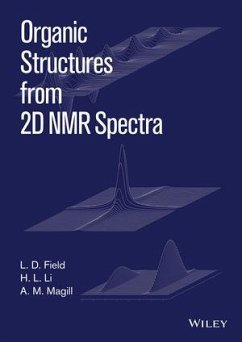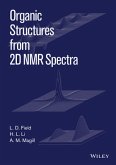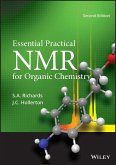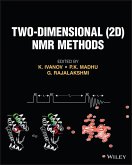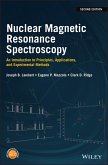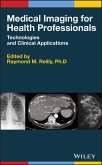The derivation of structural information from spectroscopic data is now an integral part of organic chemistry courses at all Universities. Over recent years, a number of powerful two-dimensional NMR techniques (e.g. HSQC, HMBC, TOCSY, COSY and NOESY) have been developed and these have vastly expanded the amount of structural information that can be obtained by NMR spectroscopy. Improvements in NMR instrumentation now mean that 2D NMR spectra are routinely (and sometimes automatically) acquired during the identification and characterisation of organic compounds. Organic Structures from 2D NMR Spectra is a carefully chosen set of more than 60 structural problems employing 2D-NMR spectroscopy. The problems are graded to develop and consolidate a student's understanding of 2D NMR spectroscopy. There are many easy problems at the beginning of the collection, to build confidence and demonstrate the basic principles from which structural information can be extracted using 2D NMR. The accompanying text is very descriptive and focussed on explaining the underlying theory at the most appropriate level to sufficiently tackle the problems. Organic Structures from 2D NMR Spectra * Is a graded series of about 60 problems in 2D NMR spectroscopy that assumes a basic knowledge of organic chemistry and a basic knowledge of one-dimensional NMR spectroscopy * Incorporates the basic theory behind 2D NMR and those common 2D NMR experiments that have proved most useful in solving structural problems in organic chemistry * Focuses on the most common 2D NMR techniques - including COSY, NOESY, HMBC, TOCSY, CH-Correlation and multiplicity-edited C-H Correlation. * Incorporates several examples containing the heteronuclei ¯31P, ¯15N and ¯19F Organic Structures from 2D NMR Spectra is a logical follow-on from the highly successful "Organic Structures from Spectra" which is now in its fifth edition. The book will be invaluable for students of Chemistry, Pharmacy, Biochemistry and those taking courses in Organic Chemistry. Also available: Instructors Guide and Solutions Manual to Organic Structures from 2D NMR Spectra
Dieser Download kann aus rechtlichen Gründen nur mit Rechnungsadresse in A, B, BG, CY, CZ, D, DK, EW, E, FIN, F, GR, HR, H, IRL, I, LT, L, LR, M, NL, PL, P, R, S, SLO, SK ausgeliefert werden.

